#food forest
Text

Sugarcane is a widely grown crop in the Nile Basin, but its destructive effects on soils, water resources and biodiversity have become increasingly apparent.
As the thirsty crop draws down water resources, aquatic species like the critically endangered Nubian flapshell turtle suffer a loss of habitat, forage and nesting sites.
In an effort to revive soils, diversify diets and incomes, and boost water levels that many animals rely on, communities are implementing agroforestry projects in lieu of monocultures.
The resulting “food forests” attract an array of wildlife while refilling wetlands and river systems where the culturally important flapshell turtles swim.
#good news#nile river#africa#kenya#nubian flapshell turtle#food forest#restoration#turtles#agroforestry#environmentalism#science#environment#nature#animals#conservation#sugarcane
473 notes
·
View notes
Text
What if Tucson’s million new trees — and the rest of the country’s — didn’t just keep sidewalks cool? What if they helped feed people, too?
That’s what Brandon Merchant hopes will happen on the shadeless south side of Tucson, a city where about one-fifth of the population lives more than a mile from a grocery store. He’s working on a project to plant velvet mesquite trees that thrive in the dry Sonoran Desert and have been used for centuries as a food source. The mesquite trees’ seed pods can be ground into a sweet, protein-rich flour used to make bread, cookies, and pancakes. Merchant, who works at the Community Food Bank of Southern Arizona, sees cultivating mesquite around the city and surrounding areas as an opportunity to ease both heat and hunger. The outcome could be a network of “food forests,” community spaces where volunteers tend fruit trees and other edible plants for neighbors to forage.
“Thinking about the root causes of hunger and the root causes of health issues, there are all these things that tie together: lack of green spaces, lack of biodiversity,” Merchant said. (The food bank received half a million dollars from the Biden administration through the Inflation Reduction Act.)
Merchant’s initiative fits into a national trend of combining forestry — and Forest Service funding — with efforts to feed people. Volunteers, school teachers, and urban farmers in cities across the country are planting fruit and nut trees, berry bushes, and other edible plants in public spaces to create shade, provide access to green space, and supply neighbors with free and healthy food. These food forests, forest gardens, and edible parks have sprouted up at churches, schools, empty lots, and street corners in numerous cities, including Boston, Philadelphia, Atlanta, Seattle, and Miami.
“It’s definitely growing in popularity,” said Cara Rockwell, who researches agroforestry and sustainable food systems at Florida International University. “Food security is one of the huge benefits.”
There are also numerous environmental benefits: Trees improve air quality, suck carbon from the atmosphere, and create habitat for wildlife, said Mikaela Schmitt-Harsh, an urban forestry expert at James Madison University in Virginia. “I think food forests are gaining popularity alongside other urban green space efforts, community gardens, green rooftops,” she added. “All of those efforts, I think, are moving us in a positive direction.”
191 notes
·
View notes
Text

858 notes
·
View notes
Video
youtube
Oakland's Radical Plant Nursery Breaks the Prison Cycle
Permaculture instructor Andrew Millison journeys to East Oakland, California, to visit the legendary plant nursery Planting Justice, which primarily hires formerly incarcerated people. They provide a fair wage and benefits to former prisoners with unbelievable results: a 2% recidivism rate, compared to 60% for the State of California. The nursery itself has an incredible diversity of edible and useful plant species and varieties, custom selected to grow an epic permaculture garden.
ORDER YOUR PLANTS: https://plantingjustice.org/
#permaculture#oakland#planting justice#perennial#food forest#fruit trees#fair wages#edible city#edible plants
271 notes
·
View notes
Text
In 20 minutes I share everything I wish I knew before I started designing my permaculture food forest.
This video covers strategies for capturing and storing water, improving and feeding your soil, creating a baseman for capturing your observations, swales, contours, guilds and layering your food forest and working with succession as well as some syntropic agroforestry techniques that you can use in your backyard.
A permaculture food forest requires upfront work, but the long-term rewards are huge! That is why I believe it’s the easiest way to grow food. No annual tilling, no toiling under the hot sun year after year, no need to purchase inputs once your forest is established. Once you set up a successful system, it will thrive for generations to come.
Links mentioned in the video:
Want to experience the magic of Goldifarms? Visit our Etsy shop: https://www.etsy.com/shop/Goldifarms
The following are Amazon Affiliate links and I may receive a small commission if you purchase through these links:
Humanure Handbook by Joseph Jenkins
https://amzn.to/441FP9w
Restoration Agriculture by Mark Stepard
https://amzn.to/422yG7k
About Goldifarms:
My name is Erin. I started Goldifarms in my backyard in January 2020 as part of my journey to heal myself and restore this land. I follow permaculture design principles to create regenerative abundance here on the Central Coast of California in zone 9a. My intention with this YouTube channel is to provide inspiration to connect with nature, grow your own food and medicine, and help create a more beautiful world together.
Thank you for all your support, I hope these videos will inspire you to follow your heart and pursue what lights up your life ✨ 🌼💛
Sending so much love to you on your journey. Thank you for watching 🐝💛🌻
Want to experience the magic of Goldifarms? Visit our Etsy shop: https://www.etsy.com/shop/Goldifarms
For a brief history of Goldifarms, check out: https://www.youtube.com/watch?v=_u5z7...
For pics of the whole project, visit: https://www.instagram.com/goldifarms/
To learn more and contact Goldifarms, visit our website: Goldifarms.com
To support Goldifarms (which would mean the world to me!), you can become a Patron: https://www.patreon.com/goldifarms
If you never want to miss a Goldifarms video, subscribe by clicking here: https://youtube.com/goldifarms?sub_co...
For access to exclusive videos, consider joining my membership channel: / @goldifarms
Music from Epidemic Sound. If you create videos and are looking for a huge selection of music, feel free to use my epidemic referral for a free month: https://share.epidemicsound.com/hlg6dg
Chapters
00:00- Intro
00:33 - Start with Why
01:20 - Imagine
03:03 - Observe
04:09 - Create a Basemap
05:18 - Design for Water
09:45 - Get that GoldiGlow!!✨
11:04 - Feed your Soil
13:52 - Layers and Succession
18:38 - Design Iteratively
#Goldifarms#solarpunk#permaculture#food Forest#agriculture#how to#how to make#how to make a food forest#farming#garden#gardening
213 notes
·
View notes
Text
GARDEN PEOPLE TALK TO ME!
I’m looking for people to interview for my game design graduation project.

I'm making a small game to educate and inspire people about Food Forests. The start-up game company eVRgreen Studio is my client for this, so it's gonna be all about nature and gamification for a sustainable society.
The game will be aimed at Millennials and Gen X with vegetable gardens big and small. If you’re in that age group and you’ve got a garden, let’s talk! If you know people who match that description, send them my way!
The project is still in its baby shoes, but that's the best time to talk to the people who are gonna play the game later on. Your input helps me decide on how we're gonna present the game, what the gameplay should look like, and what kind of art style I should go for.
I’m working on a form rn as well, but I definitely want to actually talk to some people. If you're interested, just drop into my dms.
#interview partners needed#garden#gardening#food forest#game design#edutainment#education and entertainment games#graduation project#drawing is a digital colouring from an old Inktober piece
44 notes
·
View notes
Text


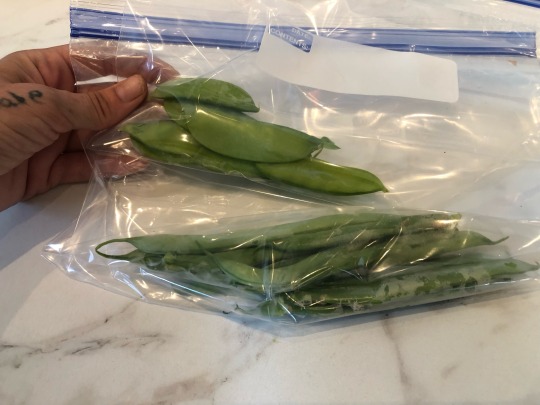
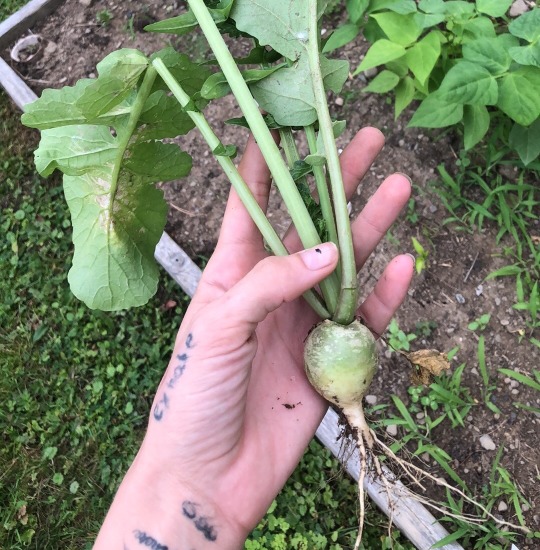
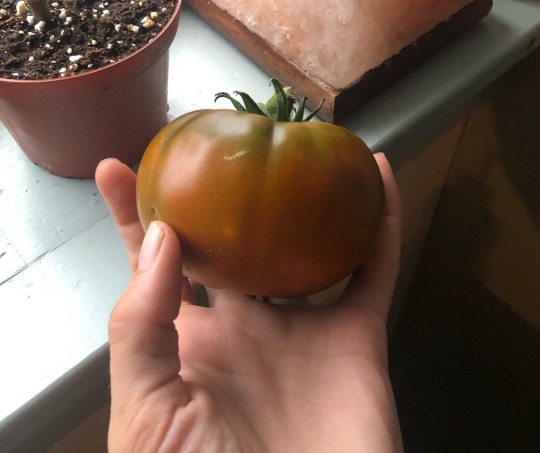


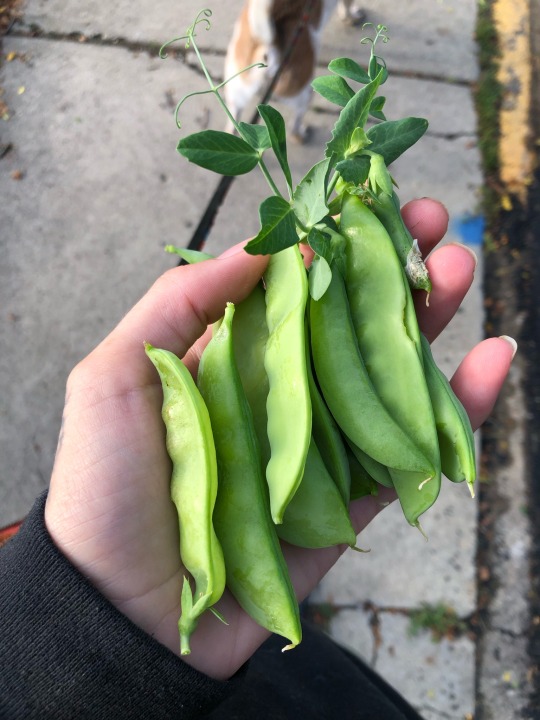
I’m very excited and grateful for the things I’ve been able to harvest this year so far 💚🥒 tomorrow I’ll be going down to the community garden and doing some weeding and harvesting, making some honey corn bread and processing some herbs I harvested as well.
#lughnasadh#Lammas#harvest#garden#gardencore#urban gardening#community gardening#container gardening#food forest#nature#pagan#holiday#celebration#paganism#Celtic paganism#eclectic#irish history#greenery#plants#gardener#love#food is free#community#direct action
131 notes
·
View notes
Text
🌿Inviting Birds Into Your Garden🐦
Birds are essential to a healthy ecosystem, but not everyone takes kindly to them in their gardens. Birds love to eat berries, peck holes in fruits, and scratch up seedlings, but in the permaculture garden we strive to partner with nature to meet the needs of wildlife AND ourselves. Growing food for ourselves at the expense of wildlife has resulted, in part, in the current global food system that doesn't value the humans involved or the ecosystem.
"By attracting birds, small animals, and insects to our yards, we not only increase biodiversity but make our gardens more balanced, disease free, and productive as well." -Toby Hemenway, Gaia's Garden: A Guide to Small-Scale Permaculture
Benefits of a Bird-Friendly Garden
Birds are beautiful! Watching them enjoy your gardens and learning bird language is rewarding and entertaining
Birds keep insect problems in check
Birds loosen the soil as they forage and scratch
Birds provide natural fertilizer
The Combination that Works
"Creating a garden that your winged friends want to call home is easy. You'll need to provide food, water, and shelter. Any of these elements will bring birds to your garden for a visit. But providing all three will make them more inclined to take up residence." -Kris Bordessa, Attainable Sustainable: The Lost Art of Self-Reliant Living
Keep in mind that birds have different needs! Not all birds eat the same things and their nesting habits vary. So the real key is diversity! Plant a variety of plant types, textures, heights, and seasons of value.
Food
Birds have a varied diet of fruit/berries, insects, and nuts/seeds. Some have more specific diets than others. Some forage for food on the ground and some hunt above ground.
Year-Round Bird Food Sources
Evergreen trees - Provide shelter, protection, and sap for food
Flowers, tall grasses, and herbs - Provide cover for ground feeders, seeds, nectar, and insects to forage
Fruits (late spring through summer) - Blueberries, brambles like blackberries or raspberries, cherries, elderberries, mulberries, serviceberries, and wild plum. Birds LOVE mulberries especially and having them available will help deter birds from your other crops
Fruits (fall) - Aronia berries, dogwood, sea buckthorn, buffaloberry. In fall birds need to build up fat reserves to survive winter, give them a fall buffet!
Fruits (winter) - These are fruits that cling to branches over winter. Crabapple, hardy kiwi, hawthorn, highbush cranberry, medlar, sumac
Nectar-producing plants for hummingbirds - Bee balm, lupine, sage, maple trees, black locust trees
Nuts - Butternut, chestnut, hazelnut, pickory, piñon, walnut. Offer protection, good nesting sites, and insects to forage
Choose plants native to your area!
2. Water
Birds love natural moving water like streams or ponds. Replicate this with a 2 inch deep bird bath with a fountain! Place your bird bath near a shrub so they have perches and an escape route nearby.
3. Shelter & Protection
Birds need shelter from the elements and protection from predators along with their food and water sources.
Tall grass, dense shrubs, tree canopy, and thorny plants act as a save haven. Birds also nest at different heights, so offer a variety of trees and shrubs for them to settle in.
More plant ideas that provide nesting sites, shelter, and protection:
Apple
Persimmon
Rose
Serviceberry
"Without animals, nature just limps along." -Toby Hemenway
Source
#permaculture#permaculture gardening#food forest#birds#gardening#birds in the garden#cottagecore#solarpunk#ecosystem
468 notes
·
View notes
Text

Currently Reading
Dave Jacke with Eric Toensmeier
EDIBLE FOREST GARDENS
VOL 2 - DESIGN & PRACTICE
Ecological Vision and Theory for Temperate Climate Permaculture
#Dave Jacke#Eric Toensmeier#farm life#farming#food forest#forest garden#permaculture#reading#sustainability
114 notes
·
View notes
Link
Traditional Hawaiian farmers have to contend not only with historic drought, erratic rainfall and deadly natural pathogens but also the dominance of industrial agriculture and foreign capital in Hawaii. The state became the biotech GMO capital of the US after agrochemical transnationals were welcomed to open research fields with fewer restrictions on potentially toxic pesticides.
In Kekona and Kapu’s food forest in Maui there are no pesticides or synthetic fertilisers. Cover crops and tilling are also out. “Traditional farming is about facilitating natural processes in order to feed the soil so that the land can feed us,” said Kekona.
Indigenous farming practices in Hawaii are guided by the lunar cycle and wind patterns, knowledge which was also passed down orally over generations, and even documented in newspaper articles going back to the 19th century. These oral histories and archives have played a crucial role in how farmers like Kekona, who didn’t grow up speaking the Hawaiian language due to forced assimilation policies, steward the land today.
The whole island was once a giant thriving food forest until colonial settlers in the 18th and 19th century stole the land, water and labor to create industrial monocrop plantations – mostly sugar and pineapples for export. This depleted the soil of its nutrients, carbon and water, and the Maui people of food and climate security.
“The goal is to knock the empire down and replace those corporate ag guys with something more environmentally sustainable which reflects our values,” said Kekona, who is part of the Indigenous sovereignty movement reconnecting Hawaiians with their lands and traditions.
737 notes
·
View notes
Text



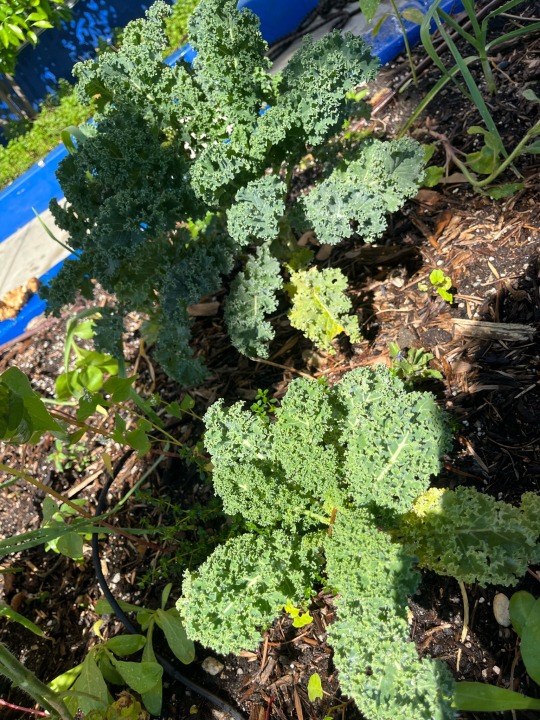



Mercado la Paloma edible garden managed by Urban Soul Farmer.
19 notes
·
View notes
Text
youtube
Everybody watch this video its really good. Honestly this whole project just makes me so happy.
7 notes
·
View notes
Text
If we want to reduce the heat we need to plant way more trees.
They provide shade, food, and effectively cool down the environment because they don’t hold heat like asphalt, pavement, bricks, traditional roofs, etc.
Trees provide habitat for birds which eat immense amounts of insects including caterpillars, mosquitos and flies, while also fertilizing the soil with their manure.
Some trees fix nitrogen into the ground making the soil more fertile in a natural and effortless and free way, just by standing there.
More trees also means more wood.
Trees can be used to create food forests, which in turn reduce the chances of forest fires because with well-managed living crops growing in the soil under the trees they hold more moisture and don’t catch on fire so easily.
You can prune them at will to give the lower crops the perfect amount of light and shade. With the pruning we can create mulch, (fire)wood, and wood chips mixed with mycelium for making walkingpaths that grow mushrooms.
Add a small amount of chickens per large area and you have extra fertilization and excellent pest control as they eat the insects that also like to eat vegetables. Include ducks and they will get rid of the slugs too.
Tree roots also hold the soil together, preventing soil erosion while providing excellent drainage so that when it rains, the water can penetrate the soil faster and deeper, effectively absorbing floods as well.
#permaculture#sustainable farming#garden#gardening#organic gardening#food forest#foodforest#biodiversity#regenerative farming#regenerative agriculture#regenerative ag#regenerative gardening#organic agriculture#bio#organic#how to prevent forest fires#how to make more food#how to create more food#foodshortages#plant more trees#trees#planting trees
203 notes
·
View notes
Text
youtube
🌱 Join us to rewild the planet: https://planetwild.com/9/join
💬 🔜 🌳 Comment to plant a tree! — We will plant one extra tree for everyone who leaves a comment below, before the end of the year. So go hit the comment section and let’s plant some trees together!
Forest Gardens are a genius approach to tree planting where trees are mixed with fruits and vegetables to create a biodiversity paradise. It’s a natural solution to overcome poverty, drought and desertification.
In our ninth mission, we’re planting 40,000 trees to turn the barren land into these beautiful forest gardens.
Chapters
0:00 What are Forest Gardens?
2:45 Getting tree planting right
4:34 What is Permaculture?
6:59 Our support
7:35 Collaboration with Andrew Millison
10:43 Mission Debrief
_______________________
What is Planet Wild?
We’re a global community of people who care deeply about nature and want to help our planet bounce back – one mission at a time.
EVERY MONTH, we work with wildlife pioneers worldwide to
🦁 bring back endangered species
🌊 support oceans and aquatic life
🌳 revive forests and rewild landscapes
EVERY MEMBER can vote on how we spend the money, connect with us on our Discord, and collect unique badges for each mission they support.
EVERY MISSION is documented in videos like this. 100% transparency.
EVERYONE can join. The bigger the community grows, the bigger these missions will get!
👉 Become a Planet Wild member: https://planetwild.com/9/join
👉 Follow us on Instagram:
/ planetwild.official
#planet wild#solarpunk#permaculture#africa#senegal#great green wall#food forest#forest green#farm#farmers#growing trees#growing food#trees#living fence#Andrew Millison#trees for the future#desertification#Youtube
24 notes
·
View notes
Text
dont put me in a graveyard
instead of my dead body feeding a greedy industry, i want my dead body to feed a forest. i personally think we should have 'burial orchards' where people can have a burial with compostable clothing and a mycelium casket from Loop, with a fruit free planted on top, and an engraved plaque as a headstone. between each grave, other beneficial plants that co-exist with the fruit trees. these would then be appointed as areas not allowed to be chopped or dug up, making it a protected food forest for the dead to rest and the living to celebrate their loved ones. doesnt that sound wonderful though?
165 notes
·
View notes
Text
Miami, Florida. The 'Food Forests for Schools' program is a ground breaking initiative that to date has installed edible forest gardens in 28 elementary (primary) schools across the Miami-Dade county schools board district. This includes the USA's first food forest in a school at Twin Lakes Elementary.
In the gardens the children learn about nutrition, medicinal plants and culturally important foods. They take home produce to their parents and grandparents, and the gardens supplement school lunch meals.
Maths and science is also taught in the outdoor classroom spaces integrated into the garden. The lesson plans have been approved by the district schools board. The participating schools have recorded significant improvements in students' performance in math and science after switching to learning in the gardens.
Thanks so much to The Education Fund - Miami for hosting me this week.


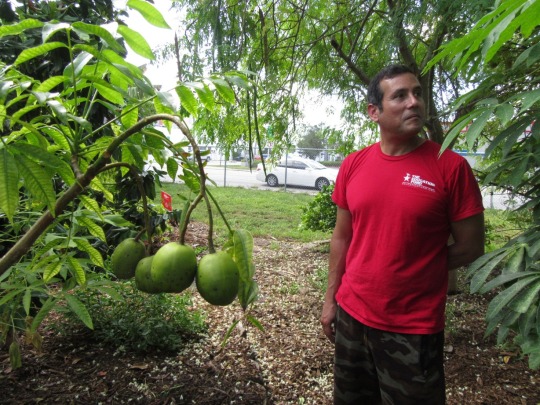


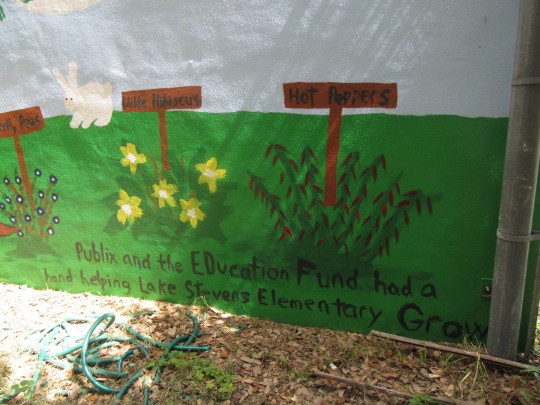

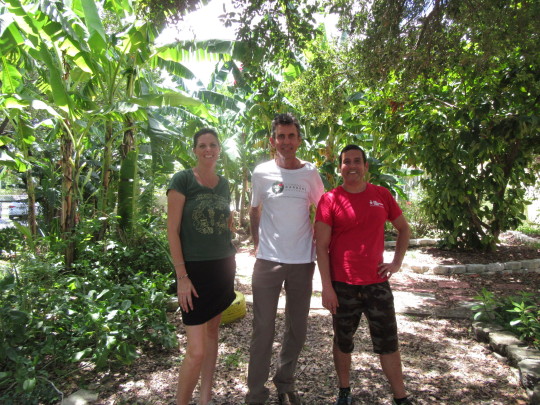
96 notes
·
View notes